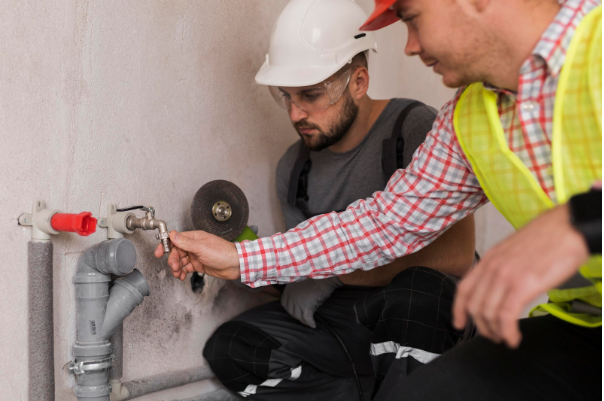Technological advancement has contributed to higher accuracy in pipe inspections. This has benefited plumbers in ensuring error-free work, thereby enhancing client satisfaction.
Pipe inspection is a common plumbing work. The traditional inspection procedures resulted in multiple issues, like poor diagnostics, costly downtime, invasive digging, etc.
Modern technology has transformed pipe inspection, thereby making it safe, efficient, and accurate. While prioritizing the latest technologies, plumbers use different tools so that various defects can be detected. This article points out 5 ways in which pipe inspections have become less invasive and more accurate due to modern technologies.
Role of Technology in Pipe Inspections
Along with making pipe inspection quicker and accurate, modern technologies have improved its maintenance quality. This accounts for expanding the system’s lifespan, thereby lowering costly repairs. Technology saves both time and money, and this has naturally led to most plumbers resorting to modern technological means to get their jobs done error-free!
Modern Technologies Making Pipe Inspections More Accurate and Less Invasive
Plumbers have always tried to bring accuracy to their work. And for this, they have integrated modern technologies in pipe inspections. Here are some key technological advancements that make inspections quicker and less invasive:

Figure: 5 Technological Advancements for Quicker Inspection
1. Trenchless Pipe Inspection Techniques
Trenchless technology is a viable option for pipe inspection tools in commercial and residential properties. Owing to technological improvement, plumbers have prioritized this inspection method. The main trenchless technologies are pipe pulling, pipe bursting, directional boring, etc.
This technology is advantageous for pipe inspection, as it ensures quicker completion time, improved staff safety, and negligible property disruption. Using trenchless technologies helps to pinpoint any defect accurately. This made the process useful in large-scale sewer systems.
2. HD CCTV Cameras
Nowadays, using a video inspection camera to inspect the interior of a pipe is a common plumbing activity. By using pushrod systems or self-propelled robots, such cameras are inserted inside a pipe. This is useful in finding pipe defects.
High-definition cameras offer real-time visuals of the cracks, corrosion, and blockages inside a pipe. This helps a plumber to identify what measures can be taken to combat the identified issue. This modern technology can also record and interpret data, thereby making the inspection procedure less invasive. Here is a comparative assessment of traditional inspection and CCTV cameras:
| Aspects | Traditional inspection | CCTV cameras |
| Accuracy | Manual guesswork | HD live visuals |
| Invasiveness | Need for digging | No need for digging |
| Cost efficiency | High, due to labour | High upfront cost, but cost-effective in the long term |
| Duration | 3-5 hours | 1-2 hours |
Table 1: Traditional inspection vs CCTV Cameras
3. IoT-based Sensors
Pipe inspection tools has become more accurate with IoT-based sensors. A miniature device, named an in-pipe robot, is used to embed smart sensors inside a pipe. What are the main benefits? Well, this modern technology monitors water flow and pressure while detecting leaks and corrosion in real-time.
With predictive maintenance, any defect inside the pipe is detected before it becomes a serious issue. Data can be sent to mobile applications, which can be analyzed by the plumbers to understand further actions. Let’s check out some key advantages of IoT in sewage inspection.
| Aspects | Application |
| Temperature | Monitoring environmental conditions |
| Water pressure | Detection of anomalies |
| Flow rate | Identification of leaks or blockages |
| pH levels | Predicting corrosions |
Table 2: Benefits of IoT in Pipe Inspection
4. Robotic Crawlers
Robotic crawlers ensure efficiency, safety, and accuracy in pipe inspection tools. This system detects leaks, blockages, and structural defects via high-resolution videos. This lowers the risk of a plumber while executing plumbing work quickly.
Robotic crawlers are used to inspect deep pipes because they are equipped with HD cameras, sensors, and cutting tools. Hence, it is suitable for oil refineries and chemical plants. A plumber can control it remotely while obtaining precise diagnostics. Here are the major features of robotic crawlers:
| Features | Description |
| Camera resolution | 1080p – 4K HD |
| Data recording | Cloud storage |
| Navigation | Remote-controlled with directional wheels |
| Use cases | Industrial pipe inspection, underground sewage, etc. |
Table 3: Features of Robotic Crawlers
5. Drones
Isn’t it irritating for a plumber to get drenched in wastewater? Well, using drones prevents the professional from examining a sewer system physically. This also eliminates the additional personnel cost.
Drones use infrared and thermal cameras to capture HD images and data so that defects like corrosion, cracks, and leaks are identified. This modern technology makes pipe inspection tools safe, accurate, and effective. To inspect a remote oil pipeline, drones are ideal. This has made the technology a key consideration in oil refineries.
Why Regular Pipe Inspection is Important?
Regular sewage inspection is important despite technological advancements. This helps to maintain the plumbing system of a property. Acknowledging regular inspection prevents any potential issue from becoming more serious damage.
Wrapping Up
Technology has revolutionized pipe inspection by making it more accurate and less invasive. Plumbers use robotic crawlers, IoT-based sensors, HD CCTV cameras, etc., to inspect pipes. Daily pipe inspection helps to prevent any problem from emerging as a serious issue.
Ready to Upgrade Pipe Inspection
Pipe inspections can be made quickly and effectively if modern technologies are included. The latest systems help to identify issues accurately so that proper measures can be undertaken. Plumbers must be equipped with modern technologies to ensure improved outcomes.

